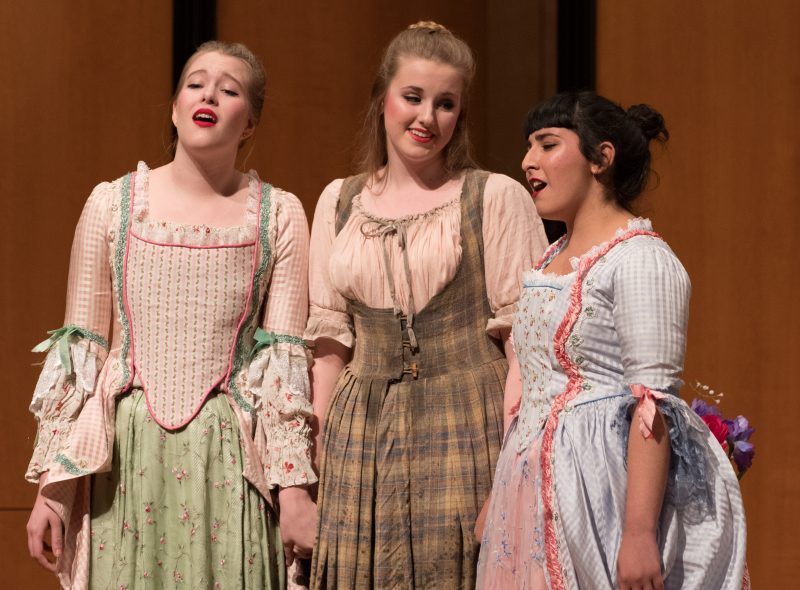“Cendrillion” adds little to the well-known and beloved fairy tale “Cinderella.” But that didn’t seem to be its goal, at least judging by Trinity’s rendition last weekend. A short, concise opera consisting of three acts, “Cendrillion” maintains the essentials of the fairy tale’s plot but adds the chance to admire some fun costuming and lighter opera singing. Maybe more critical to the busy cultural schedule of Trinikids, it was probably much shorter than whatever was on in the Stieren, freeing up more time for the weekend.
Following the central Cinderella, the play takes on a lighter note by adding a somewhat Shakespearean note of mistaken identity, with Prince Charmant disguising himself as a beggar and his chamberlain as the prince. Cinderella and the real prince meet in the first scene of the opera, neither of them knowing the other’s real identity. The chamberlain, meanwhile, comically basks in the misguided attention from princess-hopefuls, as the real prince remains ignored, trying to find a woman to love him without knowing of his title.
The other major deviation sees the evil stepmother becoming a rather bumbling, chaotic neutral stepfather. This formed an interesting depiction of gender, as Cinderella often does. Instead of three conniving women pitted against our heroine, there were only two, the stepsisters. Even though the sisters were still comically bratty, the mixture of the opera’s tone and charming performances from Sarah Hadsell and Kiyana Saidi-Nejad made them feel like fresher, more interesting takes on the old characters.
Neither of these changes made a real transformation on the plot, because at the end of the day, “Cendrillion” is just “Cinderella” in operatic clothing. Honestly, the singing was, I’m sure, technically very good, but not the focal piece of the performance for me. I know that the singing is probably the point of an opera, but I was much more captivated by the pretty costumes and the over-the-top plot, which was helped by a partially non-actor cast. Though there was a quite a bit of overlap with frequent performers from theater, it was also cool to have the choir aspects brought in, making it feel like a bit of an amalgamation, though in a smaller package than both.
This was the first opera I attended at Trinity, and I was pleased at how short it was. I don’t mean that in a snide way — the performances were all great, the production value was clear in the costumes and the play was overall very funny. While all three can equally be said about most Trinity Theatre productions, their length and entry fee often makes them a hard sell for students. The opera, in the smaller and more low-key setting of the Ruth Taylor Recital Hall, brought only about two thirds of an audience out against the second night of “Lysistrata.” However, they had the forethought to post a live recording of shows from both Friday and Saturday night to Facebook, which many that might have ventured over to “Lysistrata” may have used to catch up.
While not exactly comparable to a dramatic play or musical since the technique of the singing was more the centerpiece, “Cendrillion” still served as an example of a good, concise storytelling that takes place in under 90 minutes, something that becomes important when it’s 7 or 8 p.m. on a Saturday night. I’m sure the play or whatever was good too, though.







